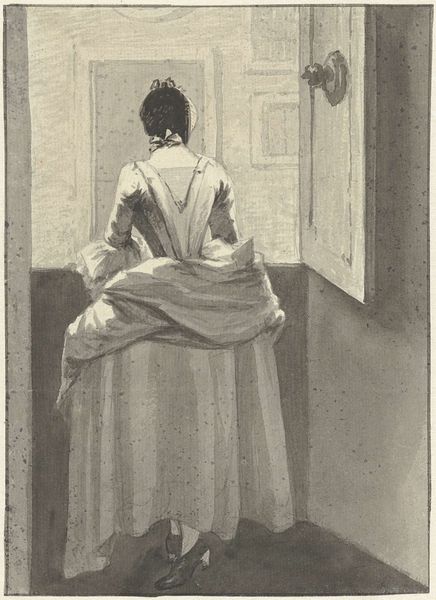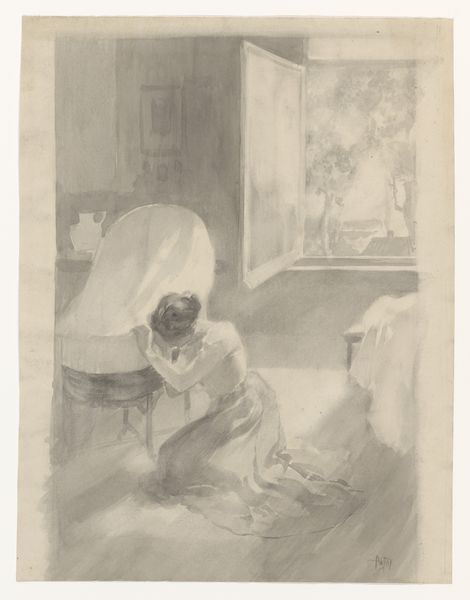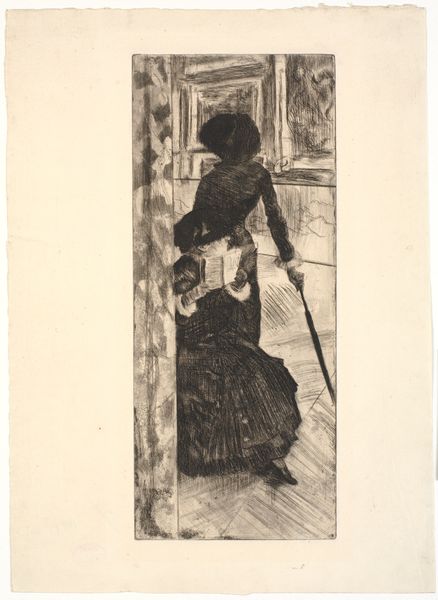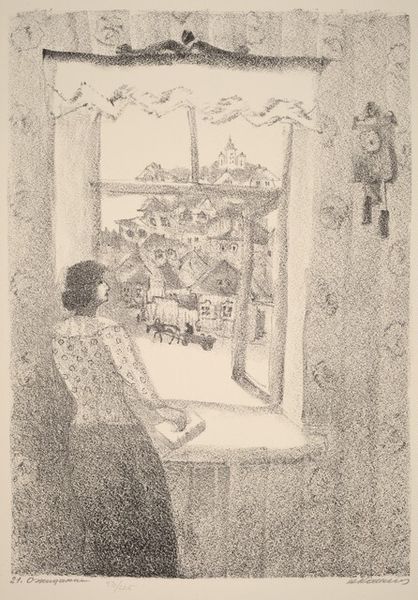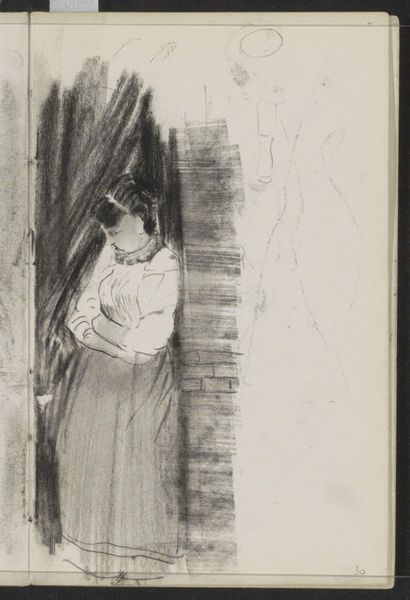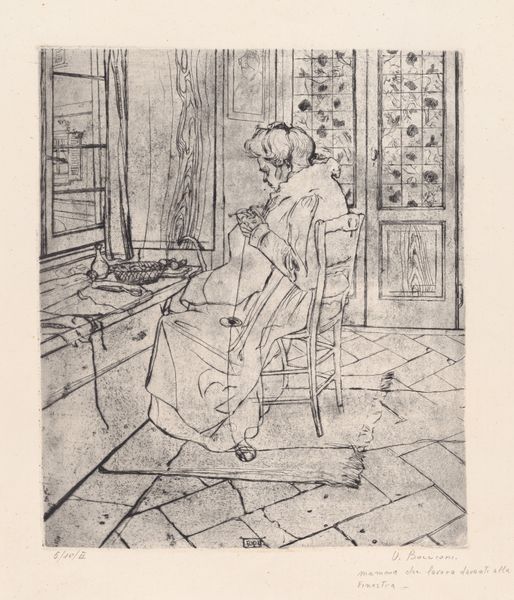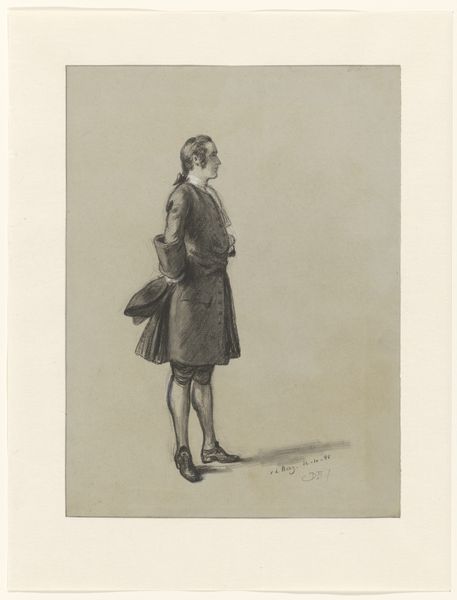
drawing, watercolor, ink
#
drawing
#
figuration
#
watercolor
#
ink
#
pencil drawing
#
cityscape
#
genre-painting
Dimensions: height 169 mm, width 113 mm
Copyright: Rijks Museum: Open Domain
Editor: This is "Vrouw voor een etalage met prenten en boeken," or "Woman in front of a storefront with prints and books" by Adriaan J. van 't Hoff, made sometime between 1903 and 1939 using drawing, watercolor, and ink. I’m really drawn to how the artist used simple materials to depict this fleeting moment of urban life. What can you tell me about it? Curator: This work speaks volumes about the burgeoning culture of consumerism and its intersection with gender in the early 20th century. Note how the artist captures the woman's engagement with the display – is she a potential customer, or simply a window shopper? The materials used—ink, watercolor, and drawing—lend themselves to the mass production of imagery in this period, think newspapers and advertisements. How does the accessibility of these materials change our perception of what’s “art”? Editor: That’s a great point! I hadn’t considered how the materials themselves are related to consumption. The choice to depict such an everyday scene suddenly feels charged with meaning. What’s implied by focusing on the availability of commercial artworks, books, prints? Curator: Exactly! It democratizes art viewing, placing it outside the elite salon or museum and onto the street. This challenges the traditional boundaries of high art. What about the production of these printed materials, who were the laborers involved and what did they earn? Were these jobs typically gendered, or indicative of larger social hierarchies? Editor: That is fascinating. Thinking about it in terms of labor really changes my perspective. It is a nice depiction of everyday life, but its beauty and the moment it represents depended on labor and emerging consumerism. I’ll definitely consider those aspects when looking at similar pieces in the future. Curator: And remember, by considering the social conditions and means of production, we move beyond mere appreciation and into critical understanding.
Comments
No comments
Be the first to comment and join the conversation on the ultimate creative platform.
